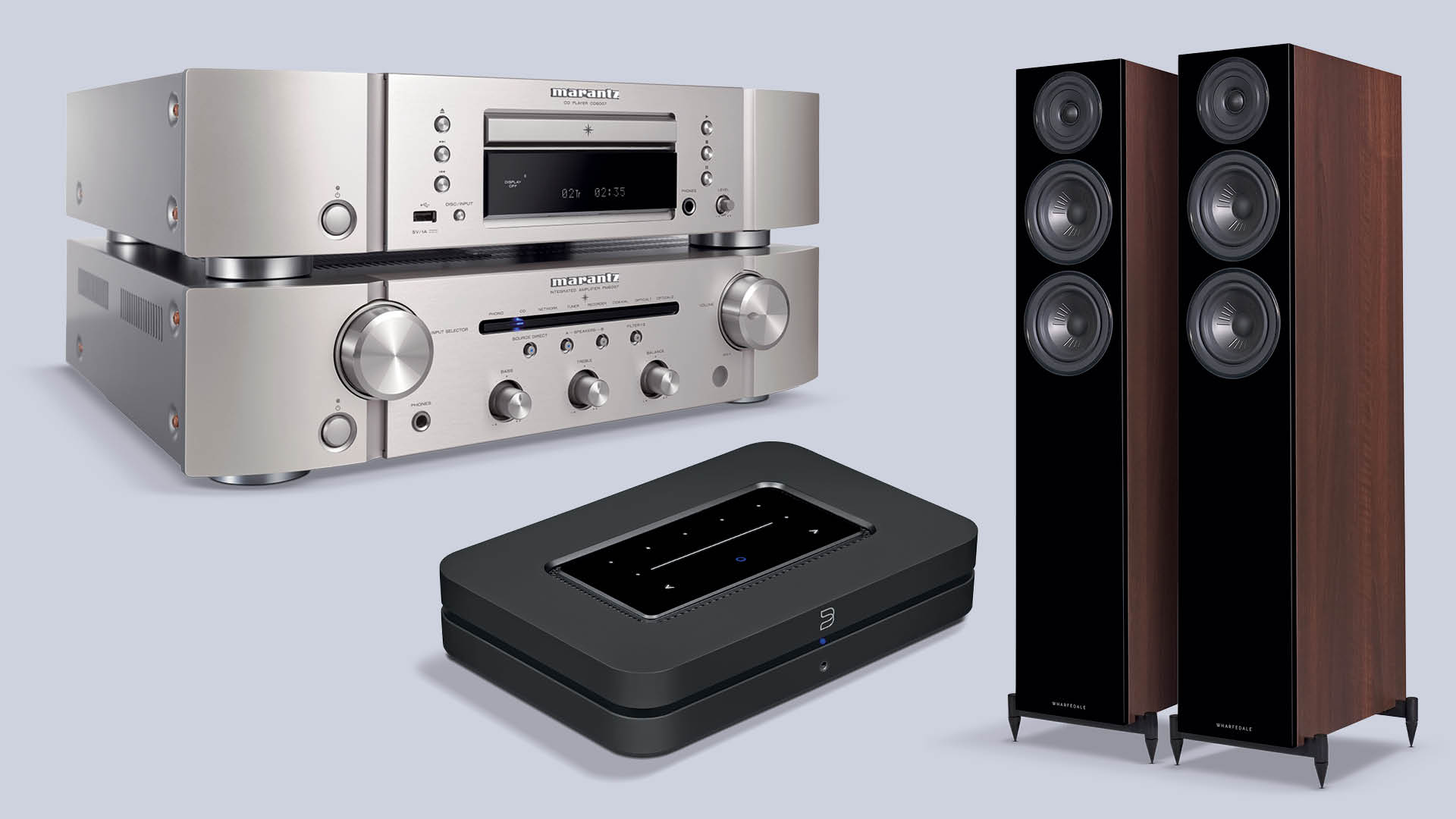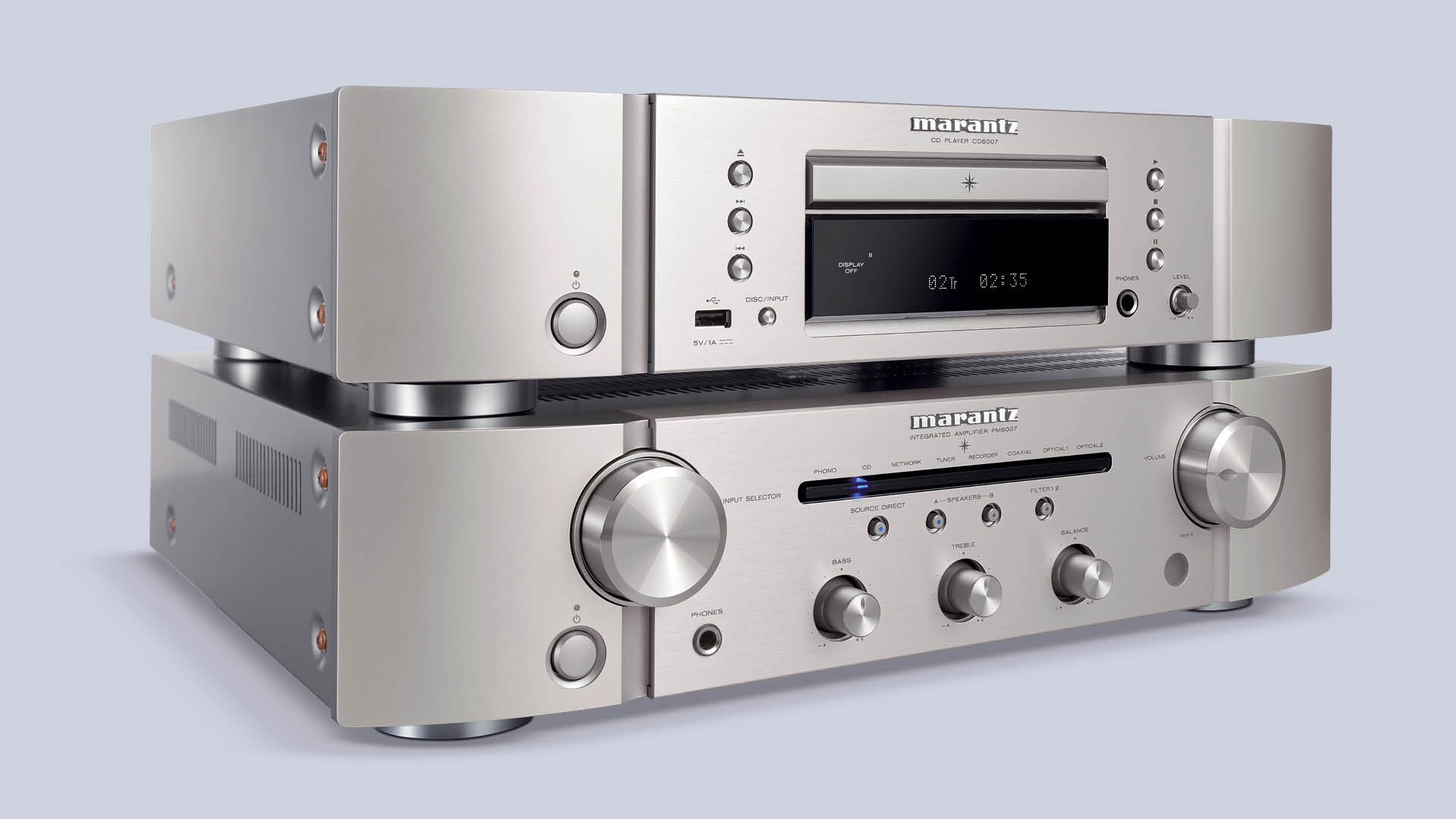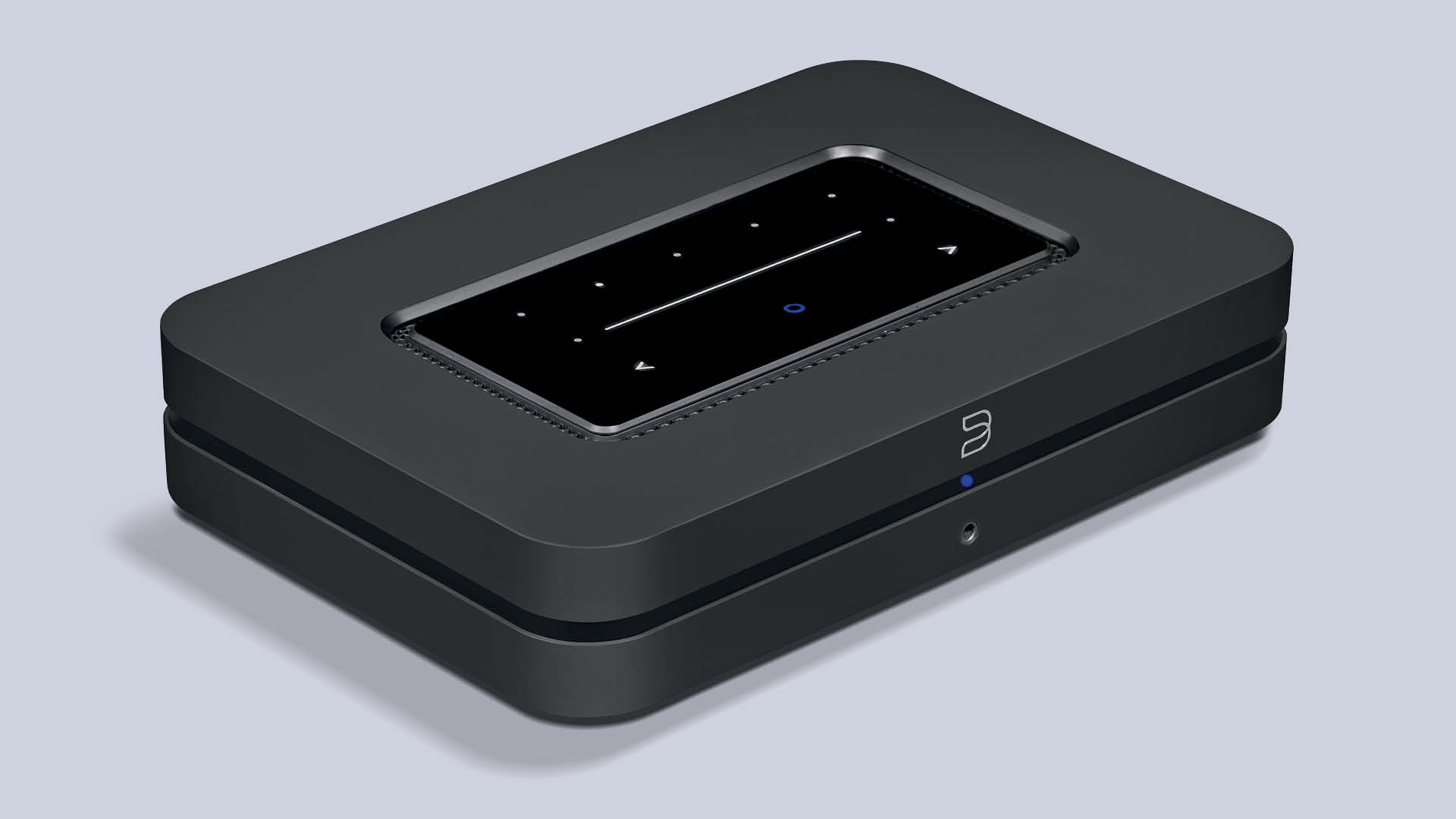The perfect digital hi-fi system for music streaming and CDs
This fantastic set-up will serve all your digital music needs

While it's nice to reminisce about the days of vinyl, the fact of the matter is that some of us have moved on. First, there was the emergence of the compact disc (who hasn't got a stack of CDs stashed somewhere in their house?) but more recently, consumers have started to migrate to music streaming.
This is why we've decided to build you a brilliant hi-fi system that will satisfy anyone with a digital music collection.
We've taken advantage of some familial synergy with a Marantz CD player and amplifier duo complementing each other beautifully. And we have joined that fine pairing with Award winners from Bluesound and Wharfedale to complete a sophisticated streaming and CD-loving set-up.
The system
CD player: Marantz CD6007 (£399, $499)
Amplifier: Marantz PM6007 (£449, $599)
Streamer: Bluesound Node (2021) (£549, $549, AU$999)
Speakers: Wharefdale Diamond 12.3 (£499, $798, AU$1699)
Total: £1896 / $3842
Amplifier: Marantz PM6007 / CD player: Marantz CD6007

We should start with the Marantz pairing. Both of these 6000 series offerings are perennial Award winners from us, so it’s no huge surprise to find them gracing these pages. Marantz hits a consistent sweet spot at this price level that rivals are finding impossible to beat.
The CD 6007 uses a new DAC chip over its predecessor that allows it to process high-resolution files. Not through the CD disc drive, of course. You’ll need to use the front panel USB Type A socket to get the files into the player. Once that’s done you can play hi-res PCM music up to 24-bit/192kHz and DSD128. The last-generation model could cope with 48kHz files at best and not DSD. This means that, together with the Bluesound (on which more below), you’ve got most digital file options covered. As well as compact discs, of course.
Get the What Hi-Fi? Newsletter
The latest hi-fi, home cinema and tech news, reviews, buying advice and deals, direct to your inbox.
Compared with the older CD6006 UK Edition, also one of our Award winners in the past, this new machine is a crisper, more open performer. Stereo imaging has benefited, with the new Marantz able to render a more expansive and better-focused soundstage. Instruments are easier to locate and stay locked in place more easily when the music becomes more demanding. Similarly, larger-scale dynamics are delivered with more verve and punch. There’s a pleasing sense of composure to tie it all together.
The 6007 amplifier has also improved on its predecessor in similar ways. Its sonic character is as familiar as its casework: smooth, full-bodied and balanced, with a pleasing spaciousness. Like its predecessor, it’s about as agreeable a performer as you could ask for at this price.
Where it pulls away from the PM6006 UK Edition is in its greater clarity, precision and rhythmic punch. Marantz has traded some of that smoothness for a bit more oomph, as well as tightened up the bass, and the result is a markedly more spirited presentation.
As a pairing then, and at this budget, you won’t find a duo that work together as well as the Marantz siblings.
Music streamer: Bluesound Node (2021)

Music streamers are, of course, much newer tech than CD players. Still, like the Marantz pair, the Bluesound Node (2021) is some iterations down the line now. Like the two Nodes before it at their time of arrival in 2014 and 2018 respectively, the newest Node – introduced in the summer of 2021 – enters the surprisingly sparse budget music streamer market with plenty of up-to-date, all-round appeal.
The Node has a direct sound and is slightly warmer in tone than its most obvious rival, Audiolab’s 6000N Play. And it has a seemingly insatiable appetite for rhythms.
It’s very much the Bluesound character we’ve been accustomed to over recent years, and it’s a distinguishable one whatever system we listen through.
Feed the Node a rhythm, as we happily do with Nas’ The Message, and this Bluesound snaps into action, throwing itself into the lucid beat uninhibited and tightly knitting it together with the guitar pattern. His rap is forthcoming and expressive in the mix and there’s a natural sense of free-flowing dynamics to it and the accompanying instrumental.
Bluesound has adopted this entertaining sonic character since its outset – not just in the Node but in its Powernode (essentially an amplified Node) and wireless speakers too – but here it’s presented with greater refinement and detail than in previous iterations. In short, the latest, third-gen Node is pushing budget music streamers in the right direction.
Speakers: Wharfedale Diamond 12.3
Which brings us to the final piece in this sophisticated stereo jigsaw. Those floorstanding speakers. Suffice to say, these Wharfedales are easily the best
sub-£500 floorstanders we’ve come across. They give you everything the
best bookshelf speakers do, agility, good timing etc, but add that authority and punch that good floorstanders should lend the sound.
The Diamond 12.3 are masters at juggling those almost contradictory demands. They’re smooth, even-handed and wonderfully refined for the money. Feed them a poor signal (not from this system, obviously…) and they are skilled at revealing the shortcomings without shouting about them. They’ll round off rough edges and downplay unwanted aggression without smothering the life out of the music. But, on the other hand, if you give them a good source and suitably capable amplification, as here, they perform superbly.
Given Trance Frendz by Ólafur Arnalds they deliver a lovely layered sound that’s brimming with detail and dynamic nuance. These speakers capture the album’s laid-back rhythms in a pleasingly sure-footed manner and don’t get tripped up when things get complex.
They resolve a large amount of information but also present it in an organised and controlled way. The Wharfedale’s chief rival is the multiple Award-winning Fyne Audio F302i. These speakers sound more enthusiastic but are notably less refined at high frequencies and lack the Diamond’s innate sophistication.
We appreciate the 12.3’s articulate and expressive midrange and the seamless integration between the drive units. We like how Wharfedale has avoided excess; there’s enough bass weight to satisfy but not so much that it spoils the balance of the presentation. The lows are agile, satisfyingly rich and textured with it.
These Diamonds also sound good at lower-volume levels. Too often we come across speakers that come alive only when pushed hard, but the 12.3 can be enjoyed at levels that won’t wake the kids or upset the neighbours late at night.
Play them louder, though, and these speakers don’t complain. There’s punch and power when required, but also a level of subtlety that’s rare to find in a floorstander at this price. You can add an even tonal balance and stable stereo imaging to the list of plus points, too.
In short, the Wharfedale Diamond 12.3 are the perfect accompaniment for the veteran Marantz twins and Bluesound’s bang-up-to-date stream ticket.
Verdict
Whether you think it’s sophisticated in looks or not, this system is certainly a sophisticated listen. The Marantz pairing, as we say, work well together – as you would expect – and the new Bluesound streamer adds a punch of rhythmic consistency to proceedings that is rather impressive for its price.
What’s more, we are really happy to be able to recommend a pair of floorstanders at an appropriate price to this system. Until fairly recently, we wouldn’t really have had a floorstanding option that we could back 100 per cent, but Fyne Audio set the cat among the pigeons on that front a few short years ago, and Wharfedale has risen to that challenge with the Diamond 12.3s.
MORE:
How to build the perfect hi-fi system
Enjoy your favourite music on the go with this killer portable hi-fi system
Rediscover your vinyl collection with this brilliant turntable-based hi-fi system
Best CD players for every budget
What Hi-Fi?, founded in 1976, is the world's leading independent guide to buying and owning hi-fi and home entertainment products. Our comprehensive tests help you buy the very best for your money, with our advice sections giving you step-by-step information on how to get even more from your music and movies. Everything is tested by our dedicated team of in-house reviewers in our custom-built test rooms in London, Reading and Bath. Our coveted five-star rating and Awards are recognised all over the world as the ultimate seal of approval, so you can buy with absolute confidence.
-
Colbro66 Reply
I’d love to see a suggestion using Apple TV 4K box that only has the hdmi output…most stereo amps don’t have hdmi in (?)…What Hi-Fi? said:We've pieced together a hi-fi system that's perfect for digital sources, and it won't break the bank.
The perfect digital hi-fi system for music streaming and CDs : Read more -
Loomah Was interested in this because some years ago I bought a system that consisted of the Marantz 6003 CD player and amp but matched with B&W 685s. I still have it in the living room but added the node 2i early last year. Oh so similar!!Reply -
steina I find it just total hilarious that you choose an amplifier without Bluetooth in the so called:Reply
"The perfect digital hi-fi system for music streaming and CDs" Its not even close to perfect! It hasnt one of the most important features for streaming!
Its 2022, not 2010!
Most used app for streaming Tidal/Spotify is just made for Bluetooth streaming! (Yeah I know, 360 kbps/1411 kbps, bla bla bla)

